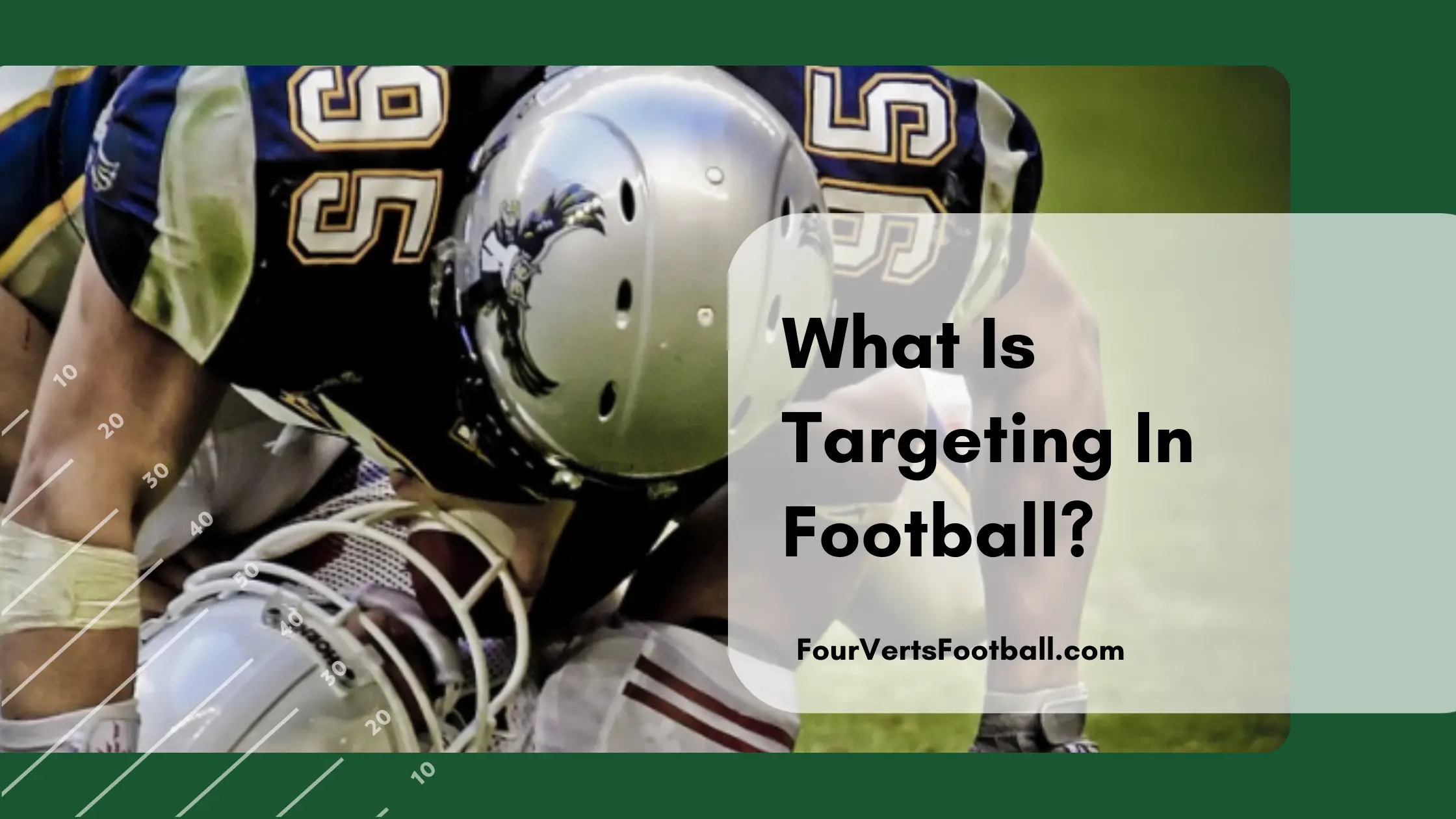In you have been around the game of football for a while you have likely heard of the term targeting. This term is used to describe dangerous hits in football yet its confusing definition can leave many fans scratching their heads.
In college football targeting is assessed when a player makes forcible contact with an opponent beyond a regular tackle or block. The NFL does not have a targetting rule and uses a use of helmet penalty instead.
Throughout this article, we are going to break down targeting rules in the NFL and NCAA so you can get a full understanding of this piece of football terminology.
Targeting In The NFL
The NFL rulebook does not specify the term targeting but rather refers to this penalty as use of the helmet. This rule is effectively the same as targeting but instead refers to using your helmet to hit a player as opposed to using the term target.
Use of the helmet rule is as follows:
“It is a foul if a player lowers his head to initiate and make contact with his helmet against an opponent.” – NFL Rulebook
This means if a player lowers his body and leads the way with his helmet he will likely be called for a use of helmet penalty.
The outcome of this action is a fifteen-yard penalty and an automatic first down. In the NFL players can also be ejected for leading with their helmet.
NFL Standards For Ejection For Leading With The Helmet
- The player has a linear body posture prior to making contact.
- The player had an unobsructed path to the opponent
- Contact Was Clearly Avoidable
If a player passes all these criteria when committing the use of helmet penalty then they are likely to get ejected from the game.
When a player has linear body posture this means that the majority of his momentum is going to in with his helmet. If a player then leads with his helmet this will make the contact noticeably more dangerous.
If a player has an unobstructed path to the opponent this means that he can tackle him in any number of ways. Therefore leading with the helmet is not necessary, this can give the officials grounds to eject the player.
If the contact itself was avoidable then this is yet another reason the officials may use to eject the offending player.
Targeting In The NCAA
Targeting in the NCAA has been an extremely controversial rule due to the fact that this penalty is met with an automatic ejection from the game.
The NCAA Rule is as follows:
“takes aim at an opponent for purposes of attacking with forcible contact that goes beyond making a legal tackle or legal block or playing the ball.” – NCAA Rulebook
In college football targeting includes any forcible contact that is made with crown of the helmet. It also includes any hits on defenceless receivers in the head or neck area.
The key to spotting a targeting penalty in football is based on the movements of the tackling player.
If a player springs upwards to make contact with the head or neck area a penalty will likely be called.
If a player lowers his body and leads with his helmet then a targeting penalty should be called.
And if a player leads with an arm, shoulder, or forearm to forcibly hit the head or neck area of a ball carrier then a penalty should be called.
If a player receives a targeting penalty for any of these reasons he will be immediately ejected from the game.
All of these infractions fit under the umbrella of forcible contact that goes beyond making a legal tackle.
The officials use this rule to call tackles that create injury risks for players. And as you can see from the wording of the rule this mainly focuses on hits with the helmet and hits to the head or neck.

